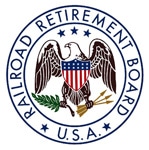
 The amounts of compensation subject to railroad retirement tier I and tier II payroll taxes will increase in 2017, while the tax rates on employers and employees will stay the same. In addition, unemployment insurance contribution rates paid by railroad employers will continue to include a 1.5 percent surcharge in 2017.
The amounts of compensation subject to railroad retirement tier I and tier II payroll taxes will increase in 2017, while the tax rates on employers and employees will stay the same. In addition, unemployment insurance contribution rates paid by railroad employers will continue to include a 1.5 percent surcharge in 2017.
Tier I and Medicare Tax.–The railroad retirement tier I payroll tax rate on covered rail employers and employees for 2017 remains at 7.65 percent. The railroad retirement tier I tax rate is the same as the social security tax, and for withholding and reporting purposes is divided into 6.20 percent for retirement and 1.45 percent for Medicare hospital insurance. The maximum amount of an employee’s earnings subject to the 6.20 percent rate increases from $118,500 to $127,200 in 2017, with no maximum on earnings subject to the 1.45 percent Medicare rate.
An additional Medicare payroll tax of 0.9 percent applies to an individual’s income exceeding $200,000, or $250,000 for a married couple filing a joint tax return. While employers will begin withholding the additional Medicare tax as soon as an individual’s wages exceed the $200,000 threshold, the final amount owed or refunded will be calculated as part of the individual’s Federal income tax return.
Tier II Tax.–The railroad retirement tier II tax rates in 2017 will remain at 4.9 percent for employees and 13.1 percent for employers. The maximum amount of earnings subject to railroad retirement tier II taxes in 2017 will increase to $94,500 from $88,200. Since 2004, tier II tax rates are based on an average account benefits ratio reflecting railroad retirement fund levels. Depending on this ratio, the tier II tax rate for employees can be between 0 percent and 4.9 percent, while the tier II rate for employers can range between 8.2 percent and 22.1 percent.
Unemployment Insurance Contributions.–Employers, but not employees, pay railroad unemployment insurance contributions, which are experience-rated by employer. The Railroad Unemployment Insurance Act also provides for a surcharge in the event the Railroad Unemployment Insurance Account balance falls below an indexed threshold amount. The accrual balance of the Railroad Unemployment Insurance Account was $93.8 million on June 30, 2016. Since the balance is less than the indexed threshold of $152.9 million, a 1.5 percent surcharge will be added to the basic contribution rates for 2017, but will not increase the maximum 12 percent rate. There was also a surcharge of 1.5 percent in 2015 and 2016, with no surcharge in 2013 and 2014.
As a result, the unemployment insurance contribution rates (including the 1.5 percent surcharge) on railroad employers in 2017 will range from the minimum rate of 2.15 percent to the maximum of 12 percent on monthly compensation up to $1,545, up from $1,455 in 2016.
In 2017, the minimum rate of 2.15 percent will apply to 78 percent of covered employers, with 8 percent paying the maximum rate of 12 percent. New employers will pay an unemployment insurance contribution rate of 1.62 percent, which represents the average rate paid by all employers in the period 2013-2015.
Related News
- Operation Lifesaver campaigns to promote rail safety in 11 states
- New TD Crew Room Flyers Available
- Colorado bill criminalizing transit assault one step closer to becoming law
- Honoring the Legacy of Brother John A. Saunders
- Kansas funds passenger rail expansion
- SMART’s General President Defends Our Brother
- Maryland Passes Monumental Transit Safety Bill
- Brother Wirth Crowned Champion in 168-Pound Masters Division Victory
- Chairman Pauli Announces Retirement, SMART-TD celebrates his career
- SMART statement on Supreme Court’s decision regarding Kilmar Armando Abrego Garcia’s return to the United States